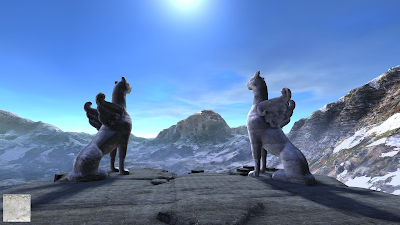Voxels make it easier to break things. Imagine you fire a rocket into a column. You can blast a hole where the rocket hit. Using the column's voxels you could create several fragments of debris. If the column's ability to stand or support other things is compromised, voxels can tell you that. At this point you get even more fragments, which could impact other voxels generating more fragments and so on.
Since you are looking at volumetric data, computing the mass and other dynamic properties of these fragments is much easier. Imagine you have a very irregular shape, made of many different materials. For a proper physics simulation you need to figure out how much the thing weights. This is a trivial process if you are using voxels. Each voxel has a material assigned to it, the material's density tells you how much the voxel weights. The weight of the fragment is the sum of the weight of its voxels. And it is more than that, you can figure out where the mass center is. Imagine a fragment that is half rock, half styrofoam. The object's center of gravity is where the rock is concentrated. The styrofoam adds very little weight.
Here is a video showing a little bit of destruction. This is still in an early stage but hopefully you will get an idea of the potential.
This video was captured on my old PC, with an Intel i5 and an ATI 4770.




